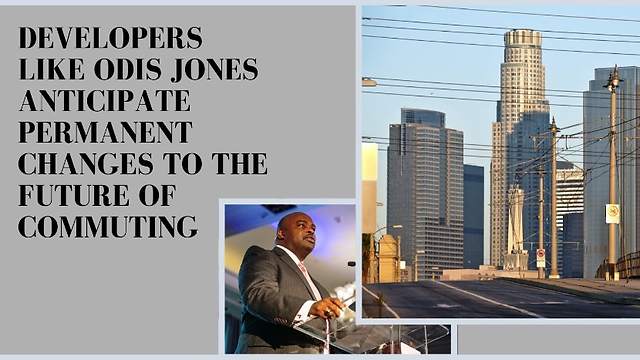
While many dense cities around the United States are miraculously free from the normal congestion that heavy traffic breeds, city planners are urging leaders to take action. Open roads, quiet subways, and idle buses present unique opportunities for local government officials to improve its city, county, and state’s infrastructure.
Odis Jones is an esteemed city planner and economic developer. He was instrumental in redeveloping urban planning in numerous cities across the United States, including Cincinnati, Detroit, and Jersey City. Now a resident of Hutto, Texas, Mr. Jones is CEO of Cobblestone Development & Consulting. He shares how cities are taking advantage of and benefitting from the coronavirus crisis.
The Impact of Less Traffic on Cities
No one wants to minimize the tragedy of those suffering as a result of COVID-19. But there are numerous problems that shelter-at-home orders are beginning to solve.
Less Pollution
National Geographic published an article showcasing clear skies in cities where smog and pollution have often hidden them from public view. Further, the dramatic (albeit temporary) drop in carbon emissions resulting from heavy traffic are informing scientists about the connection between pollution and the spread of this recent pandemic.
Local leaders may not be so inclined to dismiss the clean air (ironically so, considering that the novel coronavirus is potentially still airborne in certain parts of the world). City planners are starting to think harder about development that keeps pollution from reaching levels prior to lockdown, notes Odis Jones.
Lower Demand, Lower Supply
In some parts of the country, transportation employment is suspended until further notice. Thousands of people had made a living on mass transit work, including contractor-based ridesharing programs like Uber and Lyft.
Thanks to unemployment benefits, many of these workers are paying their bills. But plenty of them long to return to work.
While demand for public transportation is notably decreased (Bay Area Rapid Transit reported a 90% decrease in passengers), many cities are making much-needed repairs on vehicles and equipment.
Safer, Faster Updates and Repairs
Transportation repair – from subway rail to interstate overpasses – nearly always poses safety risks to laborers. By the most recent data available, road worker fatalities rose by almost 50% due to traffic over a 3-year span.
Odis Jones notes that with a major decrease in traffic, road work crews are much safer. If nothing else, city planners are taking advantage of the quiet roads to hasten repairs and finish new road construction.
Mass Transportation Improvements
Many cities are following Los Angeles’ example. At the end of March, the LACMTA accelerated “phase two of the extension of the L.A. Metro’s Purple Line into the heart of Beverly Hills.” Leaders are urging city officials to take advantage of the decreased traffic to make mass transit systems more efficient.
Other cities are able to increase efforts to upgrade their bus fleets fueled by renewable or clean energy. Some of these buses are hybrid (like those in Baltimore), while other are either fully electric or run on natural gas (like those in Las Vegas).
Initiatives to Hasten Infrastructural Improvements
As noted, road work crews are able to work more efficiently and with less fear over dangerous traffic. More than any other time in the last half a century, cities can close entire roads – major roads/highways/interstates, no less – to allow road construction to finish ahead of schedule, says Odis Jones.
Parts of the country where bridges and overpasses needed significant maintenance are now receiving the kind of attention that they’ve needed for decades.
Odis Jones on Permanent Changes to Local Commuting
Despite all the exciting infrastructural improvements, developers like Odis Jones anticipate permanent changes to the future of commuting. In many states where shelter in place orders are issued, pedestrian traffic is still allowed, so long as people maintain social distancing.
In several parts of the western world, bike sales have soared. One bike manufacturer in Australia declared that “bikes are the new toilet paper.”
Alternative transportation, such as bikes, scooters, etc. may continue to grow in popularity – particularly in metro areas – long after COVID-19 restrictions are lifted. Many local officials are increasing the number of pedestrian roads and paths throughout the city.
Lastly, many businesses are now fully invested in telecommuting to maintain operations during the pandemic. Once employees are allowed to return to the office, new remote work agreements are bound to grow more popular.
